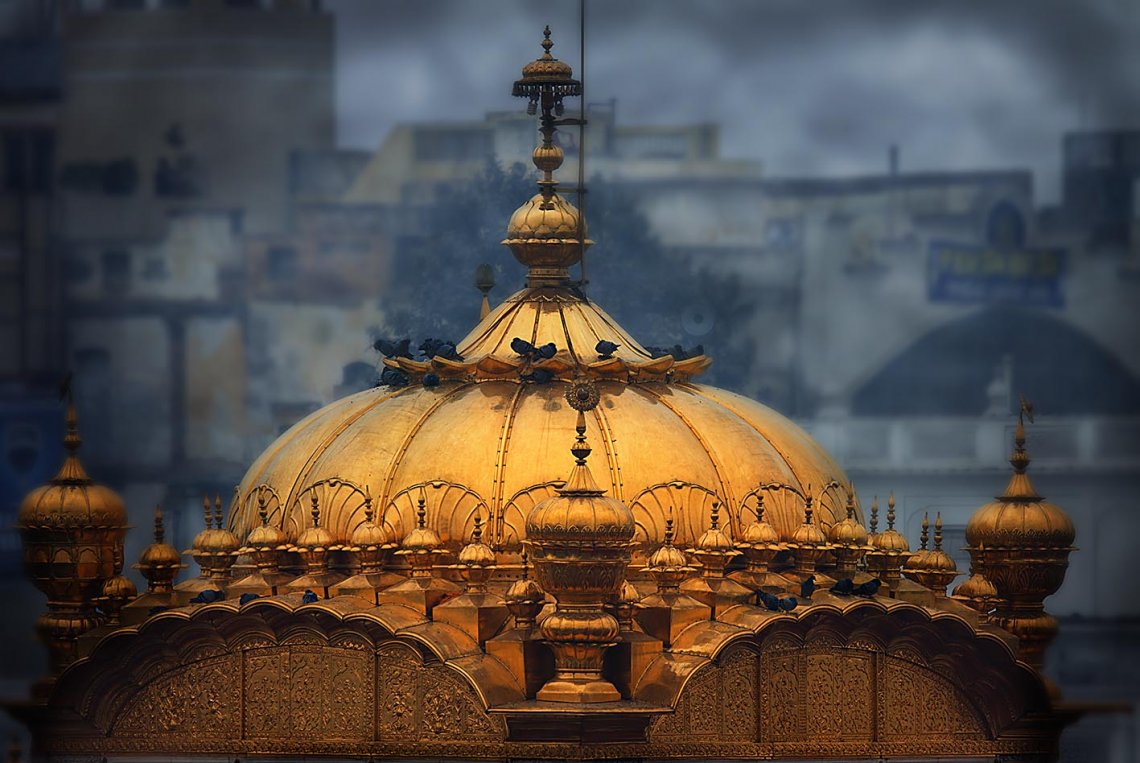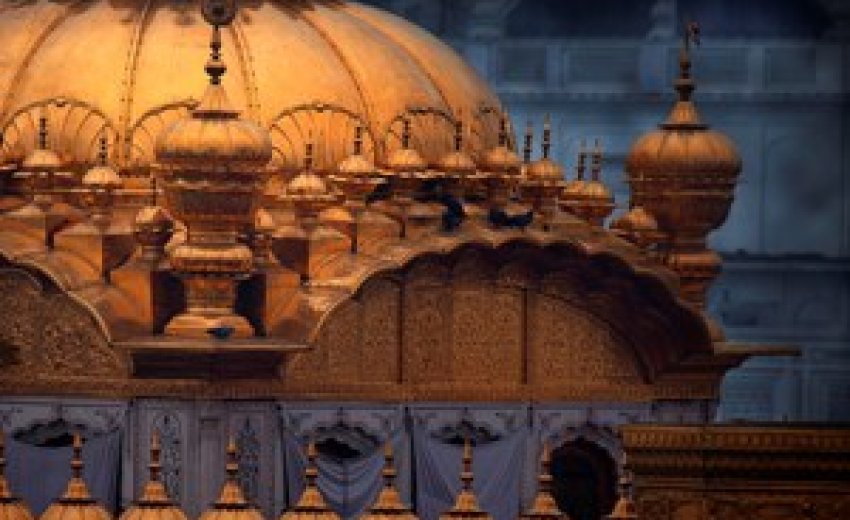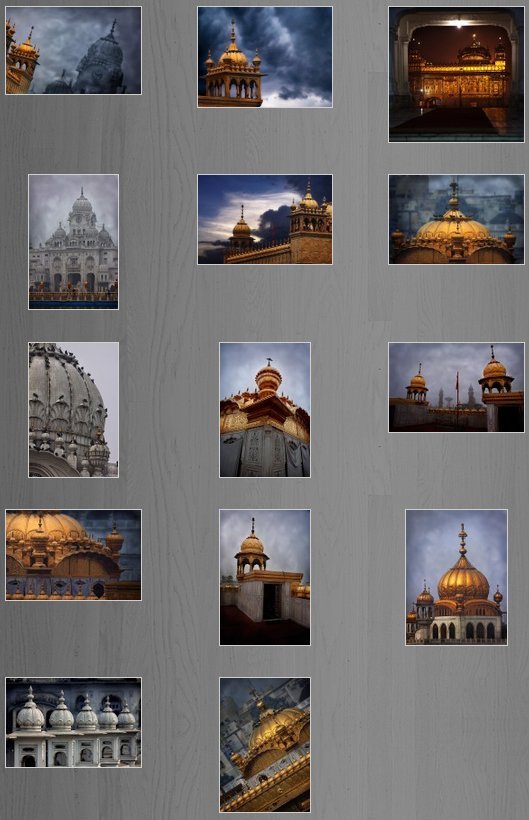 |
| Domes of Golden Temple
Jun 20, 2013: The entire architecture of the Golden Temple (Harmandar Sahib), the apex institution of Sikh faith at Amritsar, is an epitome of universal brotherhood. It’s foundation stone was laid by a spiritual leader (Mian Mir, the follower of Islam) of another faith, signifying that spirituality has no boundaries. It has four gates for entry, signifying that people from all directions and belonging to any faith are welcome. To enter the premises, one needs to take a flight of steps down, signifying the need to give up ones ego. The sanctum sanctorum is in the midst of a water-body, serving to remind the need to live an adaptable life as water takes any shape. The entire architecture is an amalgamation of Hindu and Islamic temple forms, signifying the need to live together. The aerial view of the domes, will reveal the design of a lotus flower. Lotus blooms in a dirty pond, signifying the need to create a unique identity by rising above the day to day worldly issues of life. They present a very harmonious setting. This series of pictures of the domes of the Golden Temple showcase the blend of Hinduism and Islam.One can see in these side views of the dome, the existence of the lotus leaf shaped designs, converging in the centre. In the words of Mulk Raj Anand, in the “Homage to Amritsar”*, “The Hindu Kalsa, based on mount Kailash, atop this shrine is a fanciful elaboration of the Islamic dome above the Hindu cubist architecture, inspired by the synthetic Sikh faith”. Architecurally, the dome presents neither exclusively, the Hindu form nor the Muslim one. It shows an evolution of its own, called the synthesis of the two styles. The central dome puts up splendidly sparkling appearance in sunshine. The glittering beauty of the dome has been a subject of absorbing interest for many. A number of smaller domes drawn in a line decorate the parapet and other areas oft he premises. Click first photo below and scroll to view entire series in slide show. |
 |
| They have been called "the kings of all roofs," and they cover some of our most important buildings. Domes are curved structures -- they have no angles and no corners -- and they enclose an enormous amount of space without the help of a single column. Despite their thinness, domes are some of the strongest and stiffest structures in existence today..........more |
|
*About the Book: |
Homage to Amritsar by Mulk Raj Anand |
|
This issue opens with a paean to Amritsar by Mulk Raj Anand. The legends associated with this ancient site are discussed in the context of the Ramayana epic which is said to have been written near here by Valmiki. Amritsar, literally Pool of Nectar, was sanctified by the fourth guru of the Sikh faith, Guru Ram Das in the 16th century. Under the patronage of local chiefs and later as part of Maharaja Ranjit Singh’s dominion, people of all faiths were encouraged to live here, the amenities helped pilgrims, and soon this was a flourishing business centre. Also discussed is the evolution of the Hari Mandir or Golden Temple, principle place of worship for the Sikhs, and its art and architecture. There are notes on the Akal Takht, Gurudwara Baba Atal Sahib, and on hieratic pictorial art under the Sikhs. Mural painting which flourished in 18th-century Punjab is discussed in terms of the themes, techniques, and painters. A series of Janam Sakhi paintings done in Guler which depicts events from the life of Guru Nanak is illustrated here. This is followed by brief notes on court painting, folk painting, metal ware, woodwork, and ivory. The book ends with a pullout on the chronology of Amritsar which lists gurus and rulers, and cultural personalities and high points in the history of this holy city. The issue is lavishly illustrated with striking contemporary photographs, and archival paintings, photographs, and manuscripts.....Source |
---------------------------------
Related Article:https://fateh.sikhnet.com/sikhnet/register.nsf/c30b7ff6c365f7db87256431006abaf2/ac99552e2ee49be0872566410080ae1a!OpenDocument


